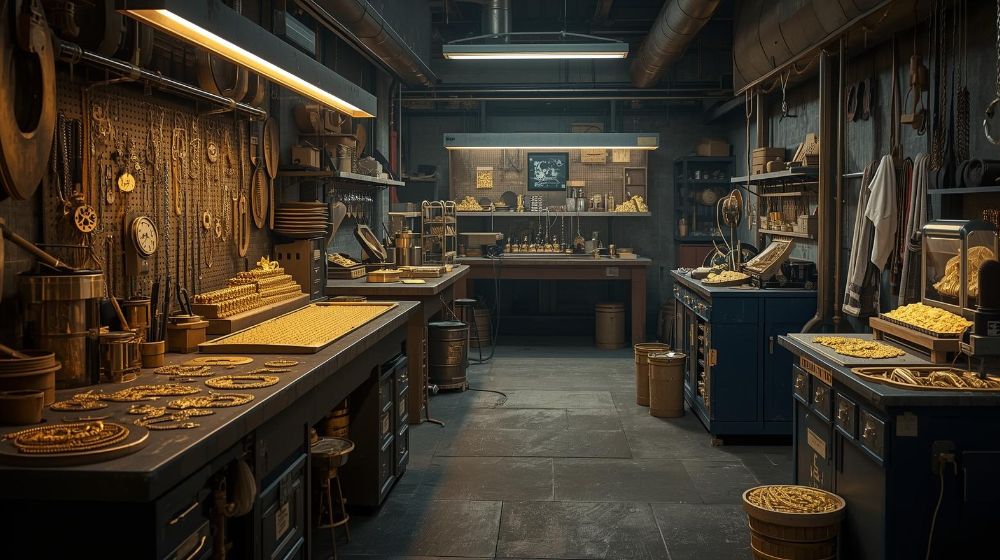Blog archive
The Evolution of Gold-Filled Manufacturing From Traditional to Modern Methods
Wednesday, November 19, 2025

Gold-filled jewelry is celebrated for offering the richness of real gold at an accessible price. But behind its growing popularity lies a fascinating transformation in how manufacturers create gold-filled pieces. From early hand-controlled bonding to today’s advanced CNC and laser technologies, gold-filled manufacturing has evolved into a highly precise and reliable craft.
Below is a journey through the evolution of this specialized industry — and how modern innovations have set a new global standard for gold-filled durability and beauty.
1. Early Mechanical Bonding: The Beginning of Gold-Filled Craft
The roots of gold-filled jewelry trace back to simple mechanical bonding. Manufacturers would:
Layer sheets of gold over brass
Apply moderate heat
Manually roll the sheets into thinner layers
The process worked, but results varied. Thickness was not always consistent, and the bonding layer could weaken over time.
Despite limitations, this era established the foundation of gold-filled technology — the concept of permanently bonding gold to a base metal.
2. High-Pressure Rolling Mills: The First Major Breakthrough
As demand increased, manufacturers began using heavy-duty rolling mills.
These machines offered:
Higher pressure bonding
More consistent layer thickness
Greater durability of the gold surface
This was the first major evolution where gold-filled became recognized as stronger and more reliable than plating.
3. Introduction of Alloy Engineering and Better Brass Cores
Manufacturers soon realized that the quality of the brass core directly affected:
Bond strength
Color quality
Resistance to tarnish
Modern alloy engineering allowed producers to choose brass mixtures that strengthened the bond and stabilized the gold color. This step dramatically improved long-term wearability.
4. The Arrival of Precision Machinery
With growing global demand, manufacturers adopted:
Automated rolling machines
Temperature-controlled bonding lines
Digital thickness monitors
For the first time, they could guarantee consistent micron-level thickness — one of the biggest quality indicators in gold-filled jewelry.
5. CNC Technology in Gold-Filled Manufacturing
CNC (Computer Numerical Control) revolutionized the industry by enabling:
Complex cuts
Intricate patterns
Uniform designs
While solid gold has always benefited from CNC machining, integrating CNC into gold-filled production allowed manufacturers to introduce premium-level craftsmanship at affordable pricing.
6. Laser Welding: The Modern Standard of Strength
Laser welding became a game-changer for gold-filled manufacturers. It offered:
Seamless joining
Zero distortion of the gold layer
Smooth, polished edges
This ensured that components like chains, rings, and pendants remained durable without weakening the gold layer.
7. Advanced Quality Control & Testing
Modern gold-filled manufacturers now rely on:
Micron thickness scanners
Tensile strength tests
XRF (X-ray fluorescence) testing
Anti-tarnish durability checks
These tests guarantee that every piece meets international standards before reaching customers.
8. The Future: Smart Manufacturing & Sustainability
Today’s evolution is driven by innovation and eco-awareness. Manufacturers are using:
Automated production lines
Energy-efficient bonding machines
Recyclable gold and brass materials
Reduced chemical processes
The future of gold-filled manufacturing is shaped by sustainability, precision, and technological excellence.
Conclusion
The journey of gold-filled manufacturing — from manual bonding to advanced CNC and laser-driven precision — shows how far the industry has evolved. Modern manufacturers have transformed gold-filled jewelry into a premium, durable, and highly consistent product category trusted worldwide.
With continuous innovation, gold-filled jewelry will only grow stronger, more refined, and more environmentally responsible.
Leave your comment
